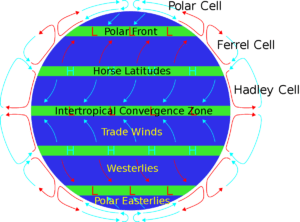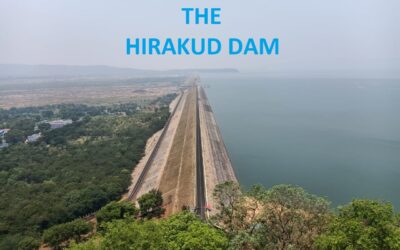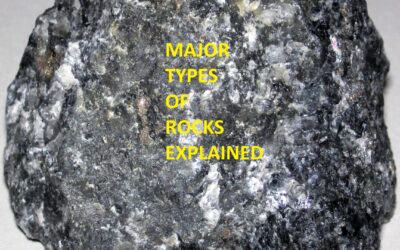ARE WE CARRYING THE WEIGHT OF A SMALL CAR ON OUR HEAD EVERY TIME ?

AIR PRESSURE
Another important topic in Geography is the Pressure belts and wind system. You will read this topic in class VII Geography book. Again atmospheric pressure belts and wind system you will have to study in class XI. Many questions are asked in competitive exams from this topic. For better clarity read about the layers of atmosphere. https://shapingminds.in/atmospheric-layers/ Therefore, it is very important for you to understand the whole concept of atmospheric pressure belts https://shapingminds.in/layers-of-atmosphere-ntse/ and wind system.
What do you mean by pressure?
Force acting perpendicularly to the surface of a body per unit area.
What is atmospheric pressure?
Pressure exerted by the weight of the atmosphere.
Does the atmosphere has weight?
Atmosphere is the cover of air which surrounds the earth. Earth has gravity so it pulls everything.
As it pulls the air, it creates pressure. This pressure is the atmospheric pressure.
UNIT OF ATMOSPHERIC PRESSURE:
i) Atmospheric pressure is measured in Pascal and Bar (Units)
ii) At sea level the pressure is almost 1 Bar.
iii) One Bar is equal to the weight of 760 mm of Mercury.
HOW MUCH ATMOSPHERIC PRESSURE WE ARE CARRYING ON OUR HEAD ?
Atmospheric pressure is almost 14.7 Pounds per square inch at the sea level.
This is equal to 7 kg weight at per square inch on our head.
The average head size is 44 sq. inch i.e. 44 x 7= 308 kg.
In simple words we are carrying a weight of a small car on our head every time.
WHY DO NOT WE GET CRUSHED ?
Nature works on the principle of balance.
our body also contains air.
our lungs, stomach, ears and blood vessels also apply pressure from inside.
this pressure is equal to the pressure applied by the atmosphere,
therefore, we do not get crushed.
INSTRUMENTS TO MEASURE ATMOSPHERIC PRESSURE:
i) MERCURY BAROMETER: It a simple barometer which has mercury in it.
ii) ANDROID BAROMETER: http://marinegyaan.com/what-is-aneroid-barometer-its-principle-and-correction/ It has no liquid like mercury. It has vacuum in it and is light and portable.
iii) ALTIMETER: A type of instrument used in Aeroplanes to measure atmospheric pressure at different heights.
INSTRUMENTS FOR WIND SPEED AND DIRECTION:
i) WIND VANE: To see the direction of wind.
ii) ANEMOMETER: To measure the speed of wind.
PRESSURE BELTS ON EARTH:

AIR PRESSURE BELTS ON EARTH
i) EQUATORIAL LOW PRESSURE BELT:
a) direct rays of the sun fall on the equator.
b) this heats up the places near equator.
c) air becomes hot and hot air is light.
d) as the hot air rises up, it creates a low pressure.
e) it happens between 5°N ans 5°S of equator.
f) this low pressure region are the DOLDRUMS.
ii) SUB-TROPICAL HIGH PRESSURE BELT:
a) winds that rises at the equator, starts cooling.
b) cold winds are heavy so it starts sinking (coming down)
c) it sinks at 30° N and 30° S latitude.
d) this increases the pressure near the tropics.
e) therefore, it is Sub-Tropical high pressure belt.
f) It is also known as HORSE LATITUDE.
III) SUB-POLAR LOW PRESSURE BELT:
a) we know that at the poles it is extremely cold.
b) winds at the poles are also cold and heavy.
c) when these winds from the poles reaches 66.5° N and 66.5°S, they are comparatively warmer.
d) warmer winds will rise high as it is light.
e) this creates a low pressure region called sub-Polar low pressure belt.
IV) POLAR HIGH PRESSURE BELT:
a) when the warmer winds rise high, they move towards the poles.
b) when it reaches near the poles, they become cold.
c) cold winds are heavy so it sinks (reaches down)
d) when they sink, they increase the air pressure.
e) this high air pressure is called Polar high pressure belt.
TYPES OF WINDS:
winds can be classified as
- Permanent winds
- Seasonal winds
- Local winds
1. PERMANENT WINDS: there are three permanent winds. They are Easterlies, Westerlies and Polar easterlies.
a) EASTERLIES:
- Winds which blow from east to west are called Easterlies.
- They are also known as TRADE WINDS.
- These winds blow from the tropics to the equator.
- During earlier days, Europeans used these winds to trade with other countries.
b) WESTERLIES:
- Blows from Sub-Tropical high pressure belt 30°N and S to Sub -Polar low pressure belt i.e. 66.5°N and S.
- west to east flowing winds are called Westerlies.
- in the Northern hemisphere, these winds blows over the land (continents)
- but in the Southern hemisphere, these winds blow very fast over the oceans.
- In southern hemisphere they are known by different names such as Roaring forties, Furious fifties, shaking/ shrieking sixties etc.
- when it reaches 40° S Latitude, it is a loud noise (roars) like a lion, therefore called as Roaring forties.
- and when it reaches 50° S Latitude, it’s speed increases, https://escales.ponant.com/en/roaring-40s-furious-50s/ it is called Furious fifties etc..
c) POLAR EASTERLIES:
- blows from polar regions 90° N and S to sub-polar low pressure belt (66.5° N& S)
- These winds are not very important.
2. SEASONAL WINDS:
The movement of these winds takes place every year with the change in season.
- Monsoon: it is a seasonal wind which reverse their direction with the change in season.
- land breeze: at night, land cools faster than water.
- therefore, wind over the oceans rises high as they are warm.
- wind starts blowing from land to sea.
- it is known as Land breeze.
3. LOCAL WINDS:
- Winds that blow over a limited area are local winds.
- these winds cover short distances
- caused due to uneven heating of earth’s surface.
- Loo is an example of Local wind which is hot and dry.
DEFLECTION OF WINDS:
i) winds deflect (turns) towards right i.e. in the anti-clockwise direction In the Northern hemisphere.
ii) where as the winds deflect (turns) towards left i.e. in the clockwise direction, In the Southern hemisphere.
This deflection of wind was first discovered by the French Physicist Coriolis, hence called Coriolis effect.




0 Comments